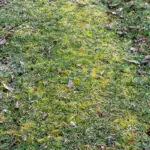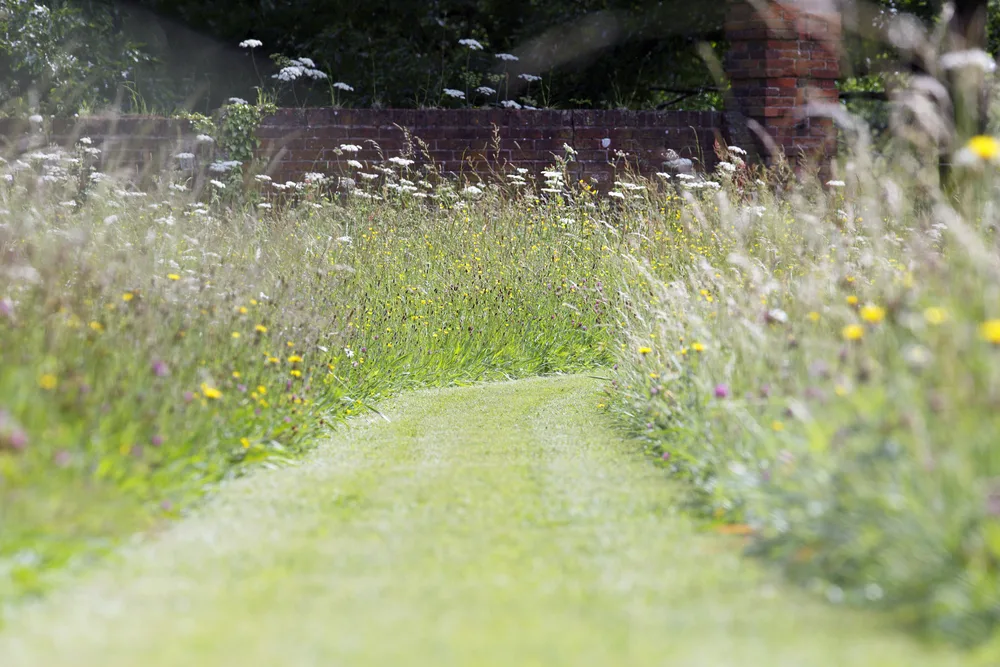
It happens every spring. Before everything bursts with green, the view from your window is a sea of brown grass. But what are those areas of yellow-green stuff? A walk outdoors reveals patches of moss encroaching on your lawn.
Surely, these weren’t as big last year, right?
Against the backdrop of dead grass, moss is much more conspicuous in early spring before the grass greens back up. And it’s about this time that folks start wondering if the moss is taking over.
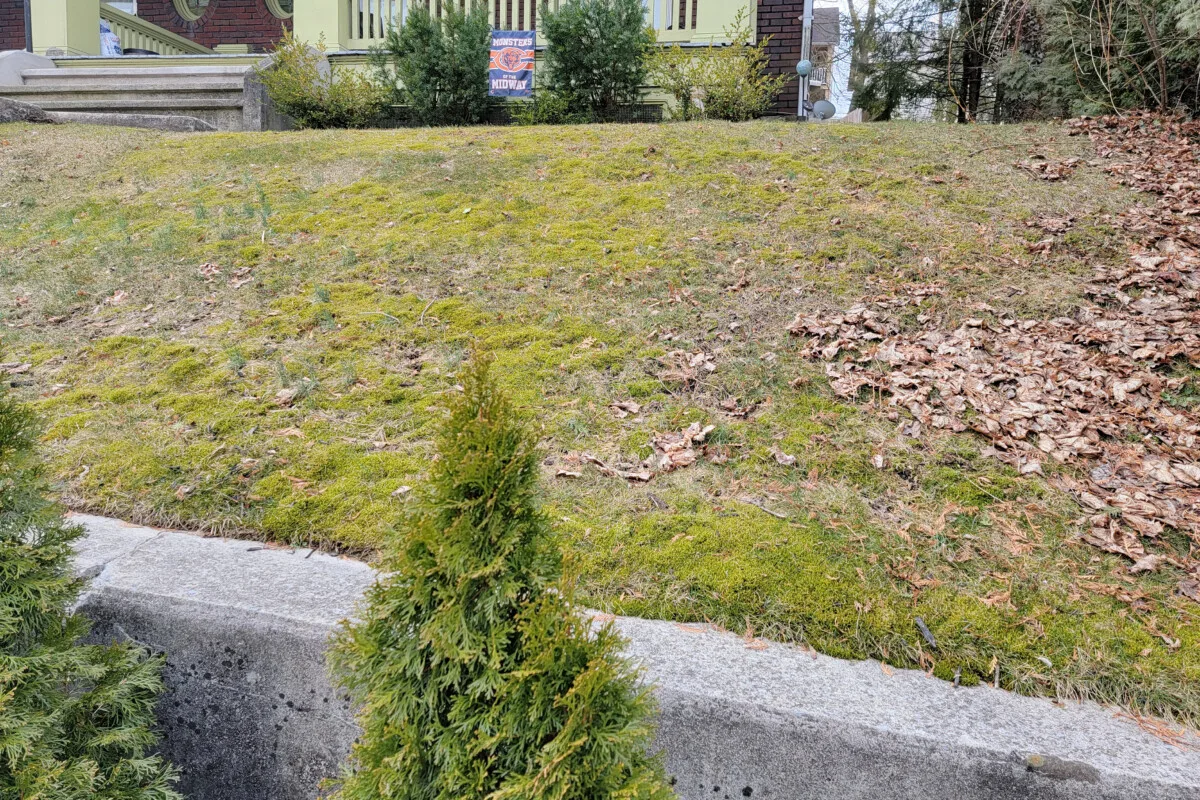
What should I do about the moss growing in my yard?
When tackling a lawn and garden plant problem, I’m a big advocate for knowing a bit more than the basics about the plant in question. Learning more about the species, where a plant is from, how it accesses nutrients and what conditions it thrives in often gives us clues on how to make it grow better.
Or, in this case – get it the heck out of our lawn.
What Exactly Is Moss and Why Is It Taking Over My Lawn?
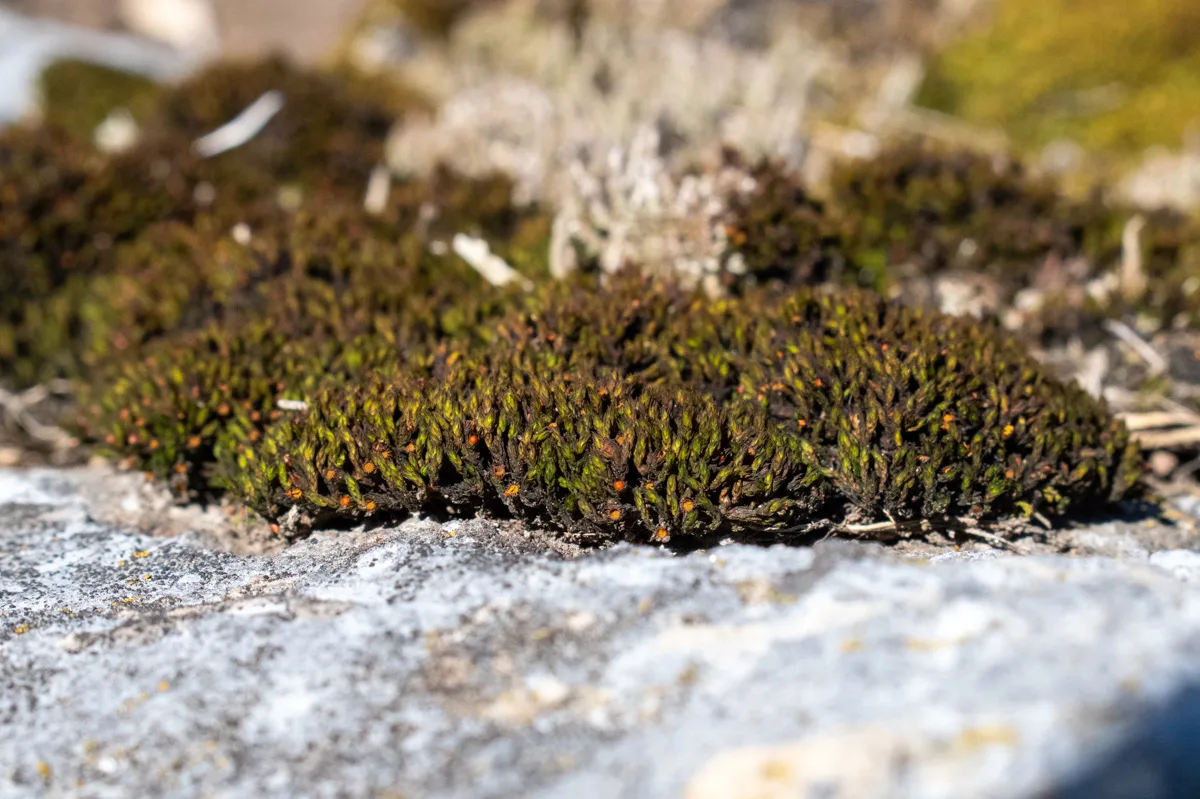
Looking at moss, it’s easy to wonder if it’s a plant or belongs in the same kingdom as those weird fungi. Moss grows in lots of places where other plants don’t. And it looks different from the typical plants we’re used to seeing. Most of it stays green all year long. What the heck is it?
Yes, mosses are in the plant kingdom but belong to a division called Bryophyta. Bryophytes are non-vascular plants.
You’re probably thinking, “Why does vascular sound familiar?”
Probably because you remember that you have a vascular system – your heart and veins make up your vascular system and are used to pump blood and oxygen throughout your body.
Similarly, vascular plants use vascular tissue to move water (xylem tissue) and nutrients (phloem tissue) throughout their “bodies.” The root system of your turf grass, and most plants, is a big part of its vascular system.
But mosses are non-vascular plants.
They don’t have root systems and instead absorb water and nutrients through their leaves. They grow in patches or mats, barely attached to the surface they grow on. Nor do they flower and create seeds. Instead, they reproduce by spreading spores released from tiny stalks that sprout up, called sporophytes.
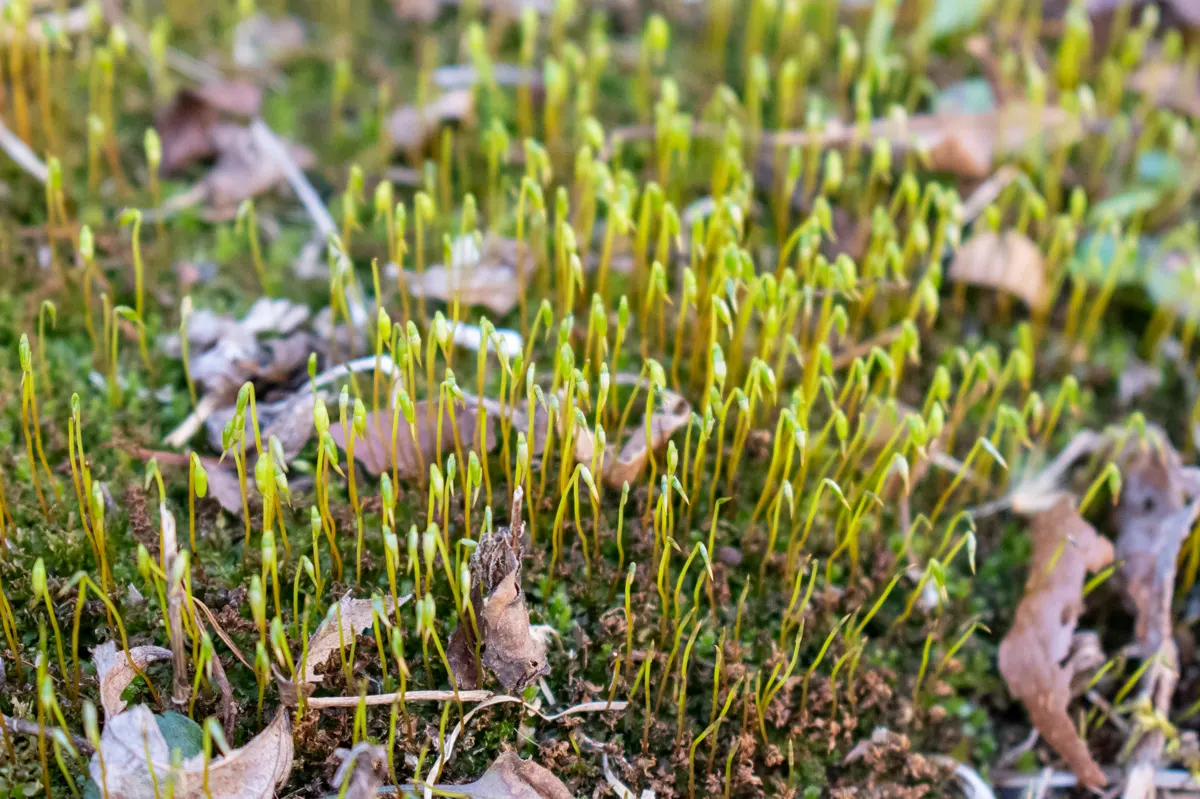
Mosses are ancient, having been around long before vascular plants with roots arrived on the scene.
“That’s really interesting, Tracey, but how does that help me get it out of my lawn?”
Patience, grasshopper.
Remember that non-vascular bit? That tells us they access water and nutrients differently from your turf grass. This means moss isn’t competing with your turf.
Yup, believe it or not, moss isn’t taking over your lawn.
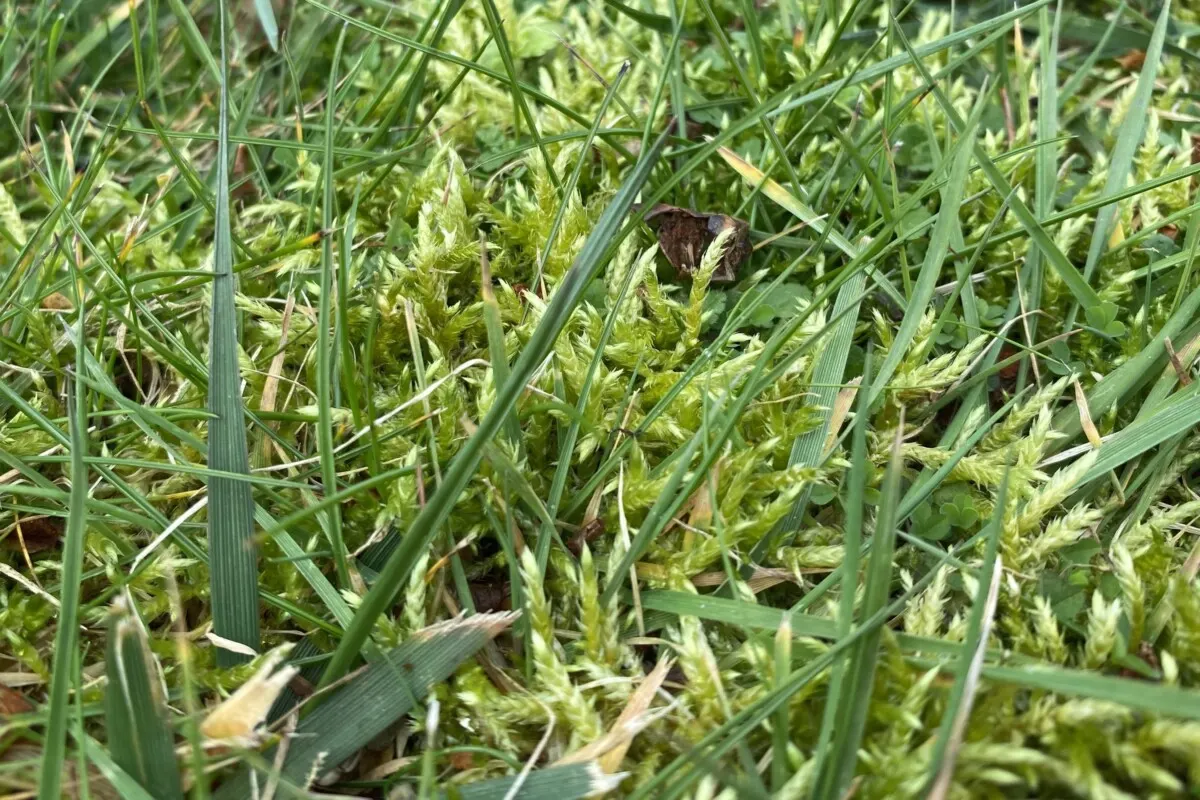
Unlike most weeds, which will aggressively compete for water and nutrients to gain a foothold, moss is an opportunist, only growing where it finds little competition.
They’re that cool, go-wherever-the-wind-takes-me aunt or uncle we all have, the one that’s always traveling.
If spores land somewhere they can grow, they will. If a stronger plant presence already exists, the moss spores can’t compete.
I know, I know, you’re already reading between the lines.
“Wait a minute, if I’ve got moss in my lawn, that means my grass is weak or dying in those areas.”
You would be correct. Moss is merely the symptom of an underlying issue affecting the growth of your turf.
“Well, that’s just great. Now, what do I do?”
You have two choices when it comes to moss in your lawn.
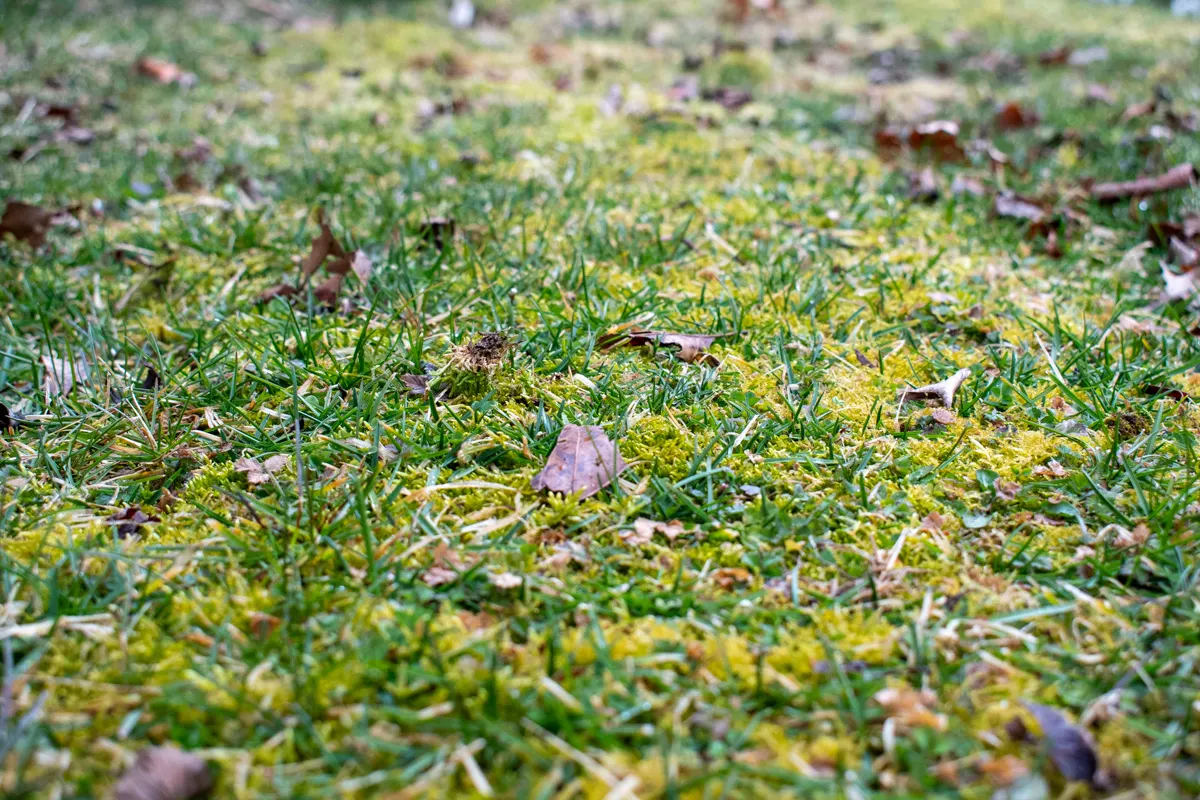
Option one – leave it alone.
Option two – remove the moss*.
Let’s take a closer look at both of these options.
Leave the Moss Alone
As we’ve already learned, moss isn’t harming your lawn. It’s simply growing where your turf grass can’t.
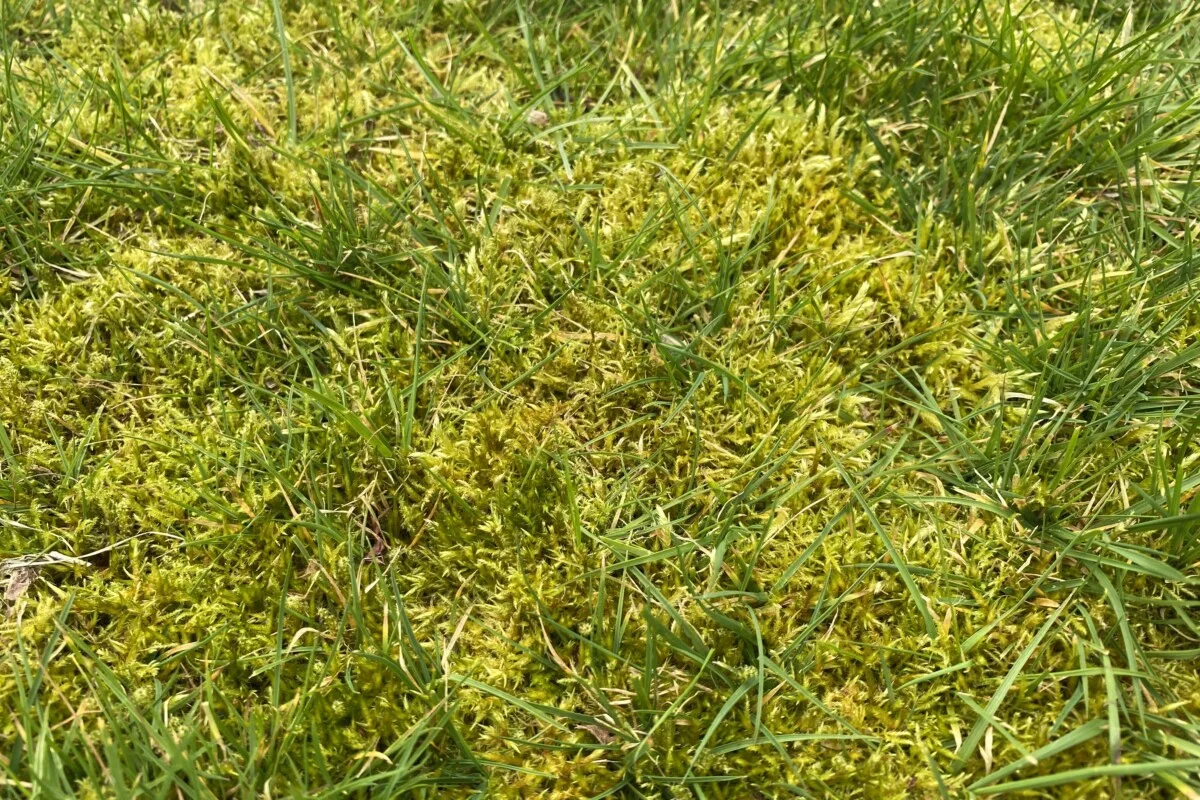
Doing nothing is a fantastic option. (Although I’m a lazy gardener, so my opinion is slightly biased.) But in all seriousness, there is no harm in doing nothing and letting the moss grow.
- It’s green and blends in with the rest of the yard once the grass grows.
- Moss is much kinder to bare feet than grass.
- It’s growing in a spot where other plants cannot, filling in what would otherwise be a patch of dirt.
- Plant diversity is key to the overall health of your lawn, so allowing more than just grass to grow is good for your entire yard.
- For the nature lover, moss provides another habitat for tiny insects which prefer dark, moist dwellings.
- Leaving the moss alone requires far less effort than removing the moss. (Trust me.)
- It doesn’t cost you a cent to walk out your door, look at the moss growing in your lawn, shrug and let it be. The same can’t be said for option number two.
Remove the Moss
If you simply don’t want moss in your yard, don’t worry; it’s surprisingly easy to remove. Remember – no roots.
Raking or Scarifying
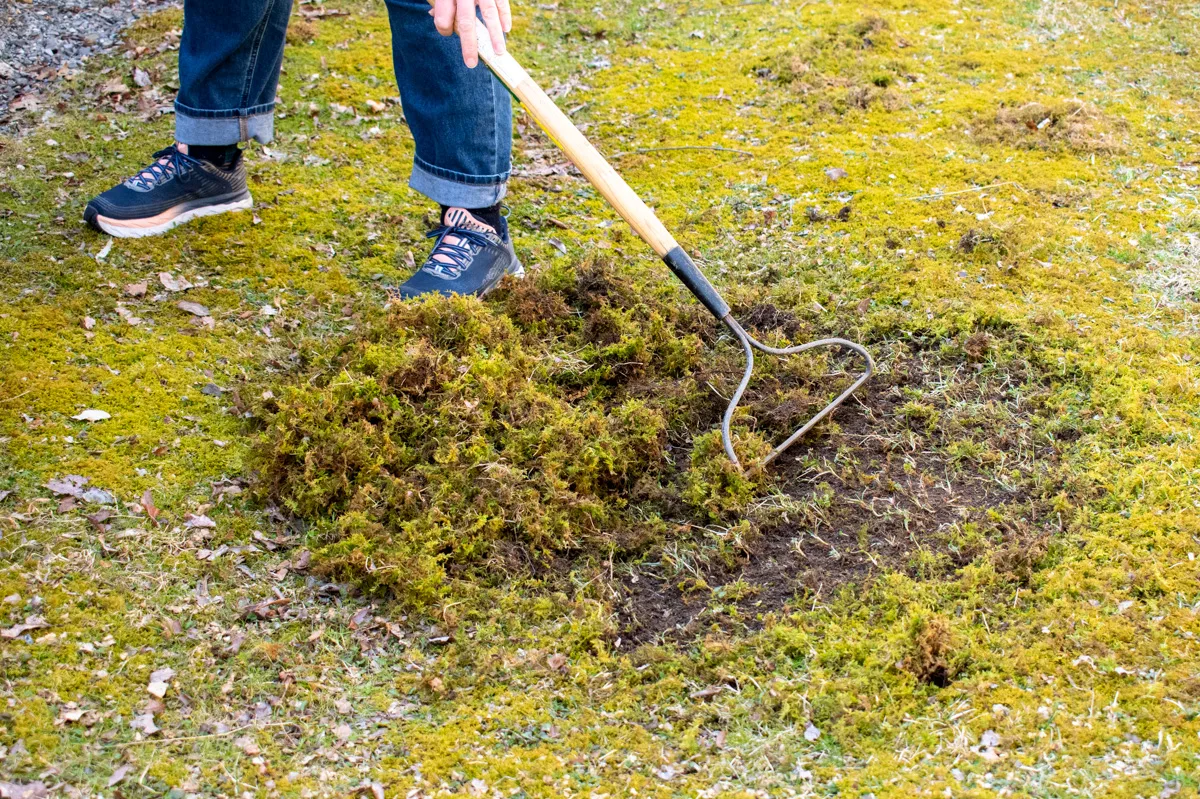
A rake will easily scrape (scarify) moss up and away from the ground. Raking is easiest if you have patches of moss to deal with.
Pitch it in the compost heap. You’re familiar with another form of beneficial moss – peat moss, no? Moss is excellent in compost.
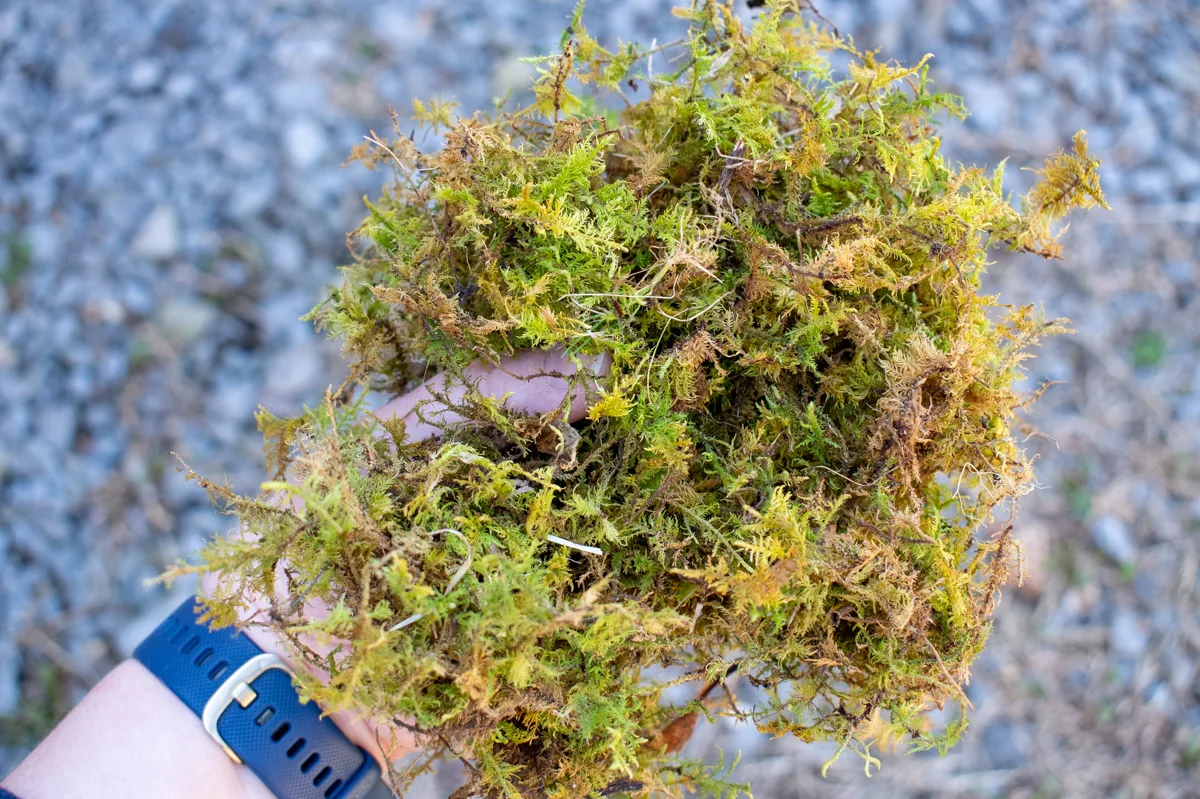
Bacterial Means
This method of moss removal is pretty brilliant. It’s organic and safe for humans and pets, unlike many synthetic chemical options. Numerous lawn fertilizers have been inoculated with hay bacteria (bacillus spp.), a bacteria naturally found in the soil (and in our guts!).
The potassium in the fertilizer kills the moss. Then the bacteria digests the dead organic material (the now deceased moss), leaving you with a lusher, healthier lawn that doesn’t need to have dead moss raked out of it.
I believe that’s called a win-win.
Granted, this approach is slow and requires numerous applications over several years to remove the moss completely. Begin applications in the spring, immediately after you’ve cut the grass. If rain isn’t expected within a few days, water in the fertilizer.
Chemical Moss Killers
These should be your last resort, mainly because they can harm other plants (including your grass) and aren’t as safe as other methods. They may also not be as effective on yards with a lot of moss. And finally, they often leave you with gross dead, black moss throughout your yard that will need to be raked out or left to break down on its own slowly.
Many lawn fertilizers contain moss-killing agents, such as iron sulfate. Look for a product specifically for the treatment of moss.
*If You Only Treat the Symptom, the Moss Will Return
Yeah, remember that little asterisk next to option number two way up there? Let’s deal with that now.
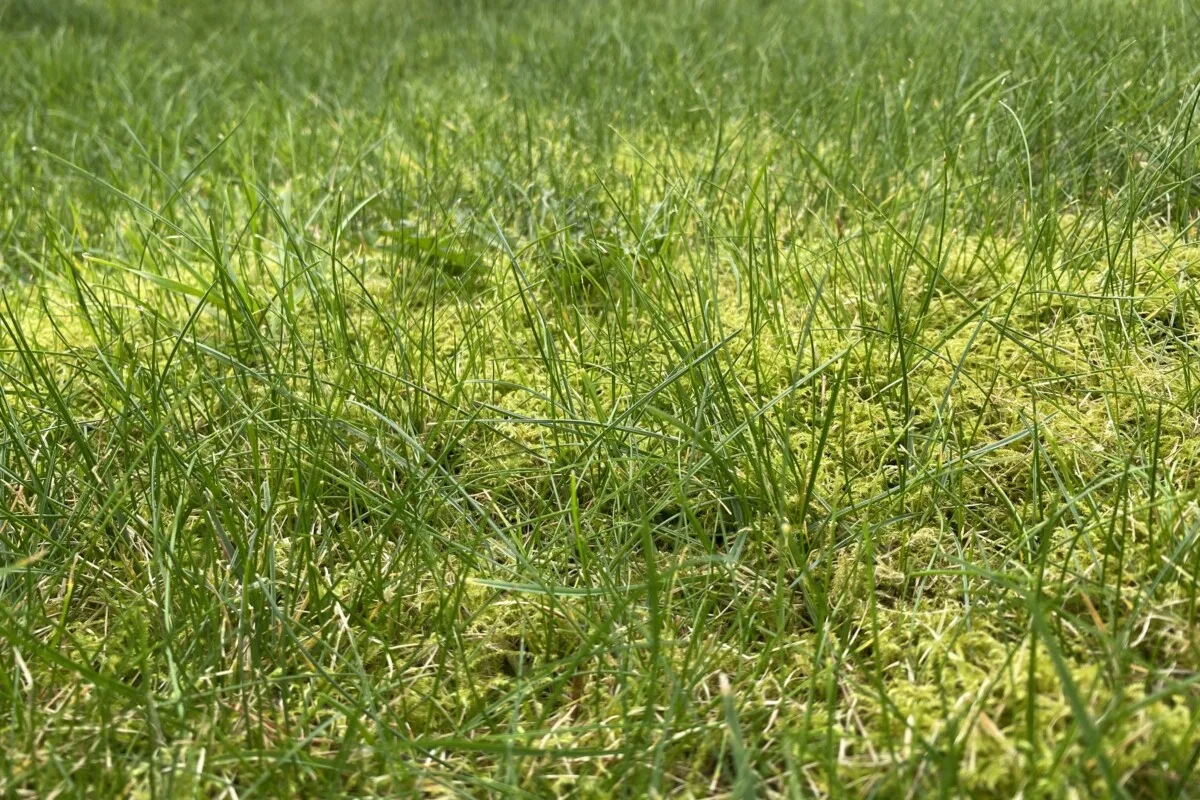
If you declare war on the moss in your yard, it’s important to figure out what’s allowing it to grow in the first place. Otherwise, it will just show up again. There are several reasons you’ll end up with moss in your yard, all of which stem from the inability of the grass to grow in that spot.
One of the smartest things you can do to solve your moss problem is to have your soil tested.
Remember, moss only grows where your grass can’t. Most of the reasons for weak grass can be traced back to soil issues, including poor drainage due to compaction or too much clay.
While there are numerous soil tests you can do yourself, I recommend contacting your local county extension office. They’re a great resource, offering soil testing for a reasonable fee.
Not only will you have a much better understanding of the makeup of your soil, but they will provide you with detailed information on how to correct any issues revealed in testing. You’re usually given instructions on what fertilizers or products to use, how much, and when to apply them.
They’re also a great place to find seed recommendations for grass species that do well in your area, including types that can grow in the shade. Most can offer information on correcting drainage and compaction issues as well.
Too much foot traffic
It’s not uncommon to have moss pop up in areas of your lawn that receive a lot of foot traffic, significantly weakening the grass. This can be pathways between a garage or shed and the home, areas where your kids play frequently, or even areas where a dog urinates.
If you want a more permanent solution for moss in walkways, consider laying down gravel or pavers. If you would rather improve the grass in those areas, fertilize and aerate them more frequently. You may even want to look for a grass species that does better with heavy foot traffic for those spots.
Drainage
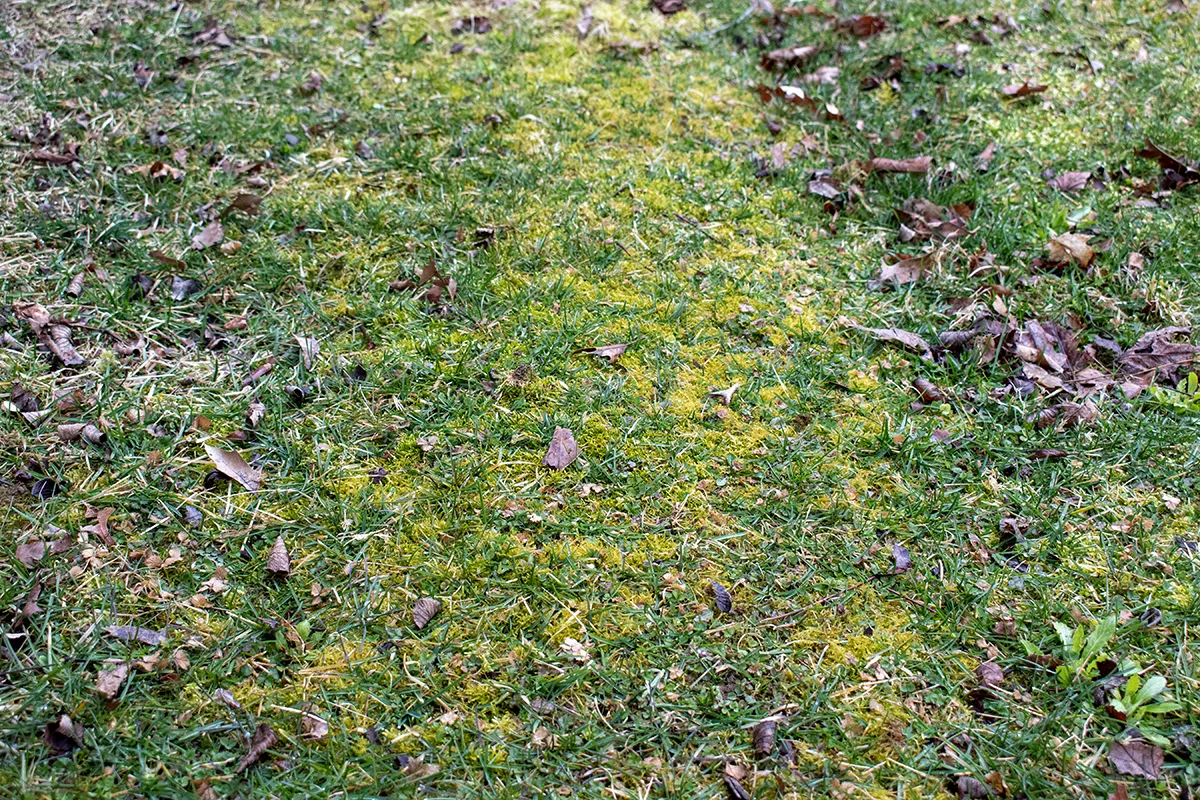
Like most vascular plants, turf grass prefers loamy soil with a good balance of silt, sand and clay. You can easily do a sediment test at home to determine the makeup of your soil. An area with poor drainage where water stands or is boggy is not going to be conducive to a healthy lawn.
Luckily, most of us only have a few spots in our lawns with drainage issues. If you have large areas of your lawn that often have standing water after heavy rain, consider implementing a rain garden to help capture and move that excess water into the ground.
Aerate areas with heavily compacted soil using a hollow-tined aerator and sprinkle a mixture of compost and sand into the holes. If you have larger areas, consider renting a gas-powered push aerator.
For serious drainage issues, you may have to enlist the services of a landscape architect or contractor.
Shade
Under trees and along the edge of woods, you’ll often find moss mixed in with the grass. Any area of your lawn with excessive shade will always be prone to moss. Prune back shrubbery or trees to allow more light to penetrate the ground and reseed with a grass variety that’s more shade-tolerant.
Acidic Soil
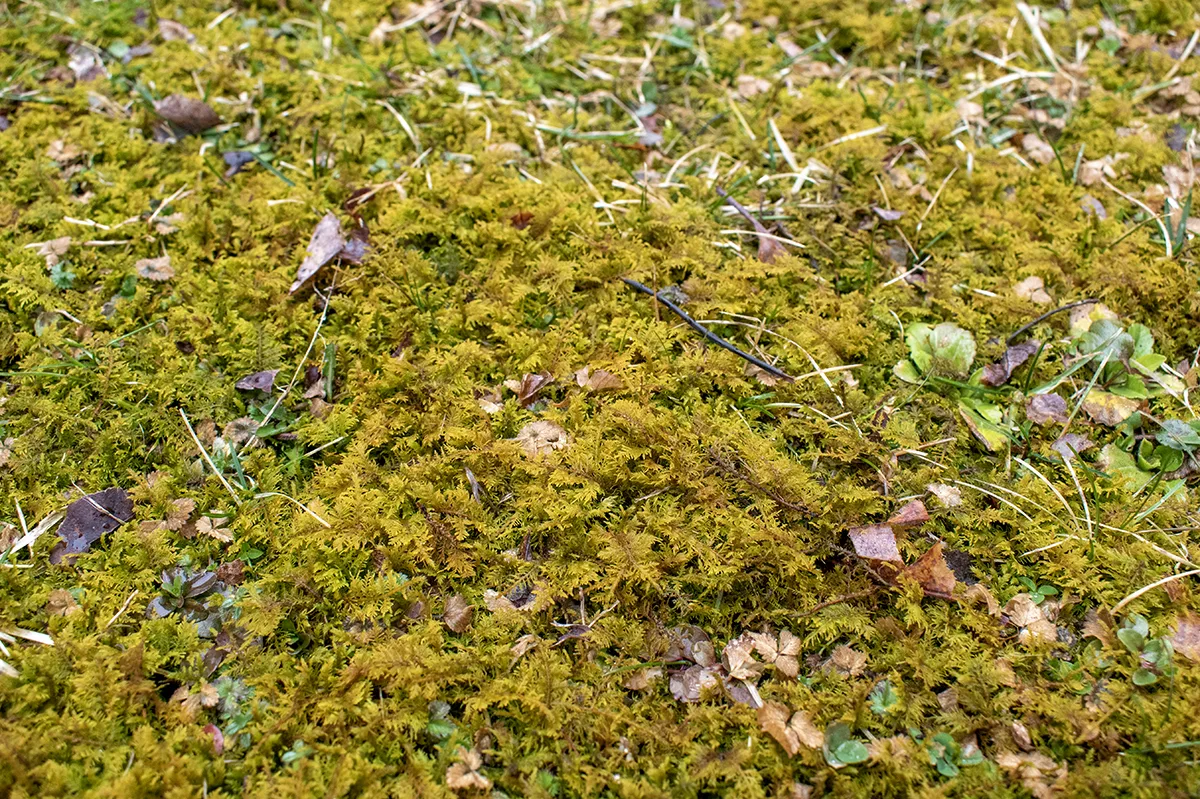
Moss loves acidic soil. In comparison, turf grass needs a pH of 6.0-7.0 to do well. You can correct overly acidic soil by adding lime. However, don’t just assume and add lime; test your soil first.
Cutting the Grass too Short
Mowing the grass too short can weaken or kill it, making it easier for moss to gain a foothold. Keep your lawn healthy, and you’ll have fewer issues overall. Three is the magic number – never cut your grass shorter than 3” and never cut more than a third of the grass off at a time.
Remember, there’s always option number one – leave the moss alone.
Like many lawn care issues, moss is only a problem because of our expectations of what the “perfect” lawn should look like. If we can let go of our desire to achieve the unattainable, we may find the soft carpet of moss here and there a welcome addition to the green space surrounding our homes.
Read Next:

Get the famous Rural Sprout newsletter delivered to your inbox.
Including Sunday musings from our editor, Tracey, as well as “What’s Up Wednesday” our roundup of what’s in season and new article updates and alerts.


